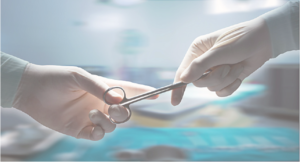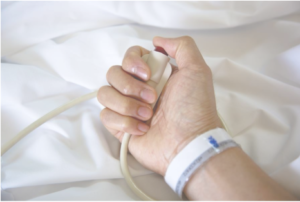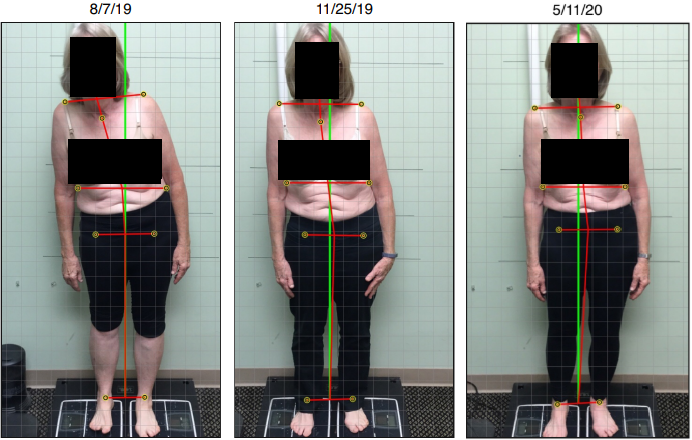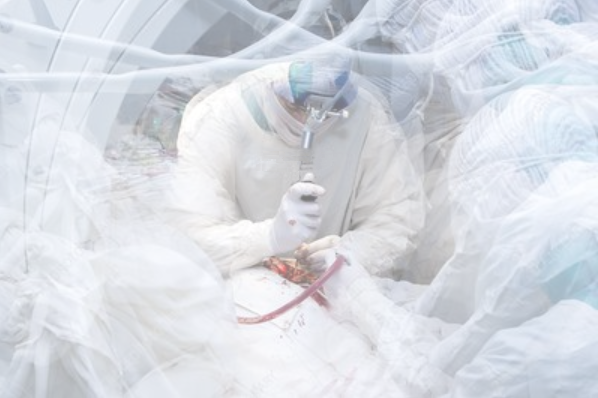
When I speak with patients or their parents or read comments on our site, one of the most common phrases is “I wish I knew about this treatment sooner”. They come across this alternative exercise based care for scoliosis by accident; searching on the web or hearing about it from a friend. Most are disappointed that they were never told there was an alternative to surgery or worse…they were told there was nothing they could do.
Many people accept advice from an orthopedic surgeon without question. They are told that surgery is the only option and have no reason to look for an alternative. For many, learning about a non surgical scoliosis option can be heartbreaking because they have already undergone the surgery…so what happens after scoliosis surgery? Is it possible to still benefit from a scoliosis exercise program? Yes!
When I speak with patients or their parents or read comments on our site, one of the most common phrases is “I wish I knew about this treatment sooner”. They come across this alternative exercise based care for scoliosis by accident; searching on the web or hearing about it from a friend. Most are disappointed that they were never told there was an alternative to surgery or worse…they were told there was nothing they could do.
Many people accept advice from an orthopedic surgeon without question. They are told that surgery is the only option and have no reason to look for an alternative. For many, learning about a non surgical scoliosis option can be heartbreaking because they have already undergone the surgery…so what happens after scoliosis surgery? Is it possible to still benefit from a scoliosis exercise program? Yes!
Skip to “Scoliosis Treatment for those who have had surgery”
The Reality of Spinal Fusion Surgery
Scoliosis spinal fusion can stabilize the curvature of the spine and halt progression but the surgeon can not cure scoliosis. Spinal fusion is an expensive and invasive procedure but it can seem worth it due to the promise of stopping progression, reducing the curve size, pain relief or improved appearance.
Adult scoliosis patients often suffer tremendously due to scoliosis pain and adolescent scoliosis patients worry about the outward appearance of the deformity. They both worry about curve progression. They want to fix their scoliosis so badly that they may not take the time to fully consider the long term outcome of scoliosis spinal fusion. If they are aware of non surgical scoliosis treatments, they may be intimidated by stories of painful braces or having to exercise regularly. They may be discouraged by well intentioned, but uninformed medical professionals from trying non surgical treatments. Many medical doctors are not even aware that scoliosis specific exercise programs exist, have been validated by science AND are very effective!
Most scoliosis surgery involves the use of titanium rods, hooks and screws that are attached to the spine. The surgeon will use powerful levers to straighten the spine and then attach rods to hold the correction. The next step in the surgery is to use fragments of bone which fuse the spine, locking in the correction obtained by the rods, hooks and screws.
| More recently, less invasive methods have become approved by the FDA. Vertebral body tethering (VBT) and vertebral body stapling (VBS) techniques can be used in selected cases of children who have significant remaining growth potential. While these types of surgeries do not involve fusion, they are still considered major spine surgery. These less invasive procedures have only been approved in the past few years, are only used in growing children, and this article is focused on what adults who have had surgery can do, so let’s focus on fusion surgery with rods, hooks, and screws. |
The operation itself is only the beginning. What happens after scoliosis fusion surgery is just as important…if not more.
Recovery from Scoliosis Fusion Surgery
The rods placed during scoliosis surgery function as braces that support the spine while the fusion heals. This can take up to six months, with fusion continuing for up to a full year. Once the fusion is complete, the spine is kept from curving abnormally, but the rods remain because to remove them would require another even longer and more technically difficult surgery.
Recovery takes time
Patients are eventually allowed to leave the hospital once they are cleared by their surgeon. However, they will feel weak, medicated and in need of rest. Twisting, lifting, bending, driving and other activities are expressly forbidden during the first few weeks. In addition, patients require assistance from a family member, partner or friend with their daily needs.
Pain management 
Patients are often prescribed narcotics post-surgery, to alleviate pain and discomfort. These drugs may limit cognitive ability, reduce overall energy levels significantly and may cause reactions such as constipation, nausea, itchiness, dizziness or lack of appetite in some patients.
Post-op Care
The surgical incision site needs to be kept clean and dry to prevent infection, complications or improper healing. While bathing the incision site must be covered and not submerged or gotten wet.
After the First Post-op Follow-up
As patients transition back to their normal lives, there are still precautions. Patients are anxious to get back to their “normal” lives, but serious precautions still need to be made. Patients may be able to engage in social activities, ride in vehicles, go back to school and transition away from narcotic pain relief. However, rest and recovery remain the top priority.
About 6 weeks after surgery, updated X-rays are taken. If the X-rays show the spine is healing properly, patients may be allowed to drive and resume some activities.
6 to 12 months post surgery, the fusion should be complete and the patient may be able to resume most activities. Full recovery can take up to two years, but even if the surgery is successful, surgery is serious, and it impacts the way a person lives their life.
Scoliosis Specific Exercise Based Treatment
At Strauss Scoliosis Correction, there is no watching and waiting to see what happens; we get to work. Through custom designed home exercise of the patient, along with guidance and support from my staff and myself, spinal curvatures can be reduced. It is not a quick fix, but for many, it is far preferable to surgery.
We strive to help patients avoid surgery. You may have been told that surgery is the only option, but in almost all cases, I believe otherwise, and my patients are the proof!
In the majority of cases, surgery should be viewed as a choice, and NOT as a required treatment. The natural history of untreated scoliosis has been studied in great depth. The research shows that the greatest danger from untreated mild to moderate scoliosis is intermittent back pain…. Who would consider major spine surgery to treat intermittent back pain? Yes, there are cases where surgery is required, but those cases are rare. Each year our office sends 10-15 patients to have scoliosis surgery, but we treat hundreds!
But what if I’ve already had Scoliosis Surgery?
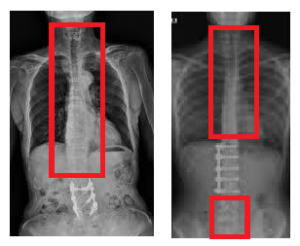
It is not too late to experience the benefits of non-surgical scoliosis treatment. If you have already had scoliosis surgery, but still experience pain or are unhappy with your posture, this approach offers you tools to help manage your pain and also gives you the skills to improve how you look. You are still able to benefit from treatments applied to the unfused areas of your spine or above and below the fusion site. These are the areas of the body that must bear the strain of the fusion, and they often deteriorate quickly causing pain and a shifted posture.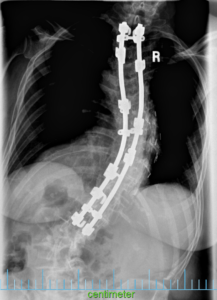
She contacted my office because she had constant low back pain, and was very concerned about her posture collapsing to the side.
Within 3 months of using a scoliosis specific home exercise program, along with 6 hours per day of bracing, Lorraine was able to stand up straighter, she had an 80% reduction in her low back pain. Most importantly, she now has hope that she can avoid postural collapse and is able manage her spine by herself with some guidance from Strauss Scoliosis Correction.
If you are interested in learning more about the differences between the traditional, surgery-focused treatment of scoliosis and scoliosis specific exercise treatment, we are here to help. Give the team at Strauss Scoliosis Correction a call at +845 624-0010 to learn more.
